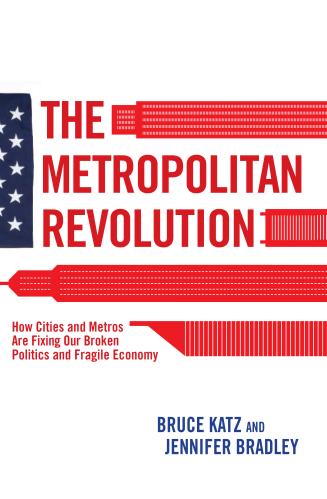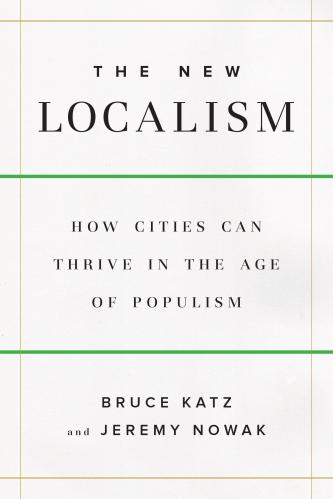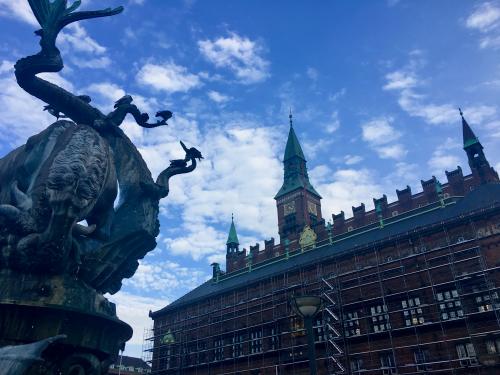In this brave new world, expectations for city leadership are rising by the day. Home to the majority of U.S. residents who did not vote for Donald Trump, cities are a natural center of resistance to the new administration’s agenda. Already leading on policies to raise the minimum wage and combat climate change, cities are now on the front lines in battles over refugees, immigration, and other federal actions that threaten to stifle the diversity and entrepreneurial activity that powers the American economy. But as the ongoing conflict over sanctuary cities shows, the sources, uses, and limits of city power with respect to other levels of government are complex and not widely understood. Which tools should city leaders be sharpening, and which of the many anticipated battles are the most strategic to fight?
In City Power: Urban Governance in a Global Age (New York: Oxford University Press, 2016), University of Virginia law professor Richard Schragger offers some answers. Though it is nominally about the more expansive concept of city power, Schragger’s real concern is the messy business of institutions, systems, laws, processes, and norms that define how decisions are made and where authority sits. By focusing on the structural and institutional forms that shape cities, Schragger puts a fine point on the vertical and horizontal limits to formal city policymaking and makes a compelling case for what can and should be done in spite of them.
Schragger’s first claim is that cities should not only fully exercise the powers they already have to the greatest extent possible, they should advocate for more powers. As “a process of economic development, as a generator of the middle class and as the primary location for the exercise of robust self-government,” cities have critical roles to play in building a thriving society.
He offers a clear prescription for what cities should use their powers to do: implement policies to enhance and expand the delivery of basic services and to ameliorate the burdens of income inequality. In Schragger’s words, inequality is “a function of the city itself, both something the city creates and something the city can solve.” City power should therefore be used to “enable cities to help their citizens manage the inevitable cycle of economic growth and decline.” With concerns for equity rising, and new research showing the costs of segregation and inequality to cities in the long run, Schragger’s advice to cities is clear: identify every available power and tool to address distributional issues, and activate them.
The flip side of the argument—what cities should not do—is likely to be his most contested claim. Schragger is deeply skeptical of the ability of city powers and policies to be decisive in altering a city’s economic development trajectory. He finds efforts to use city policies to grow local economies through business attraction and corporate subsidies an ultimately fruitless pursuit that diverts resources and attention from the more pressing goal of meeting the basic needs of residents. “Tying growth or decline to any particular policy is a hazardous business,” Schragger writes. “Unsurprisingly, city leaders tend to take credit when cities are booming and deflect blame when they bust.”
Yet there are numerous examples of cities using economic development policies to stimulate productive industrial clusters and innovation districts. Though these projects often rely on state and federal policy (and funding), they don’t happen without supportive city leadership. A plea for greater balance between policies that aim to drive growth and those that seek to improve equity seems more pragmatic than a wholesale abandonment of city leadership on development projects. Yet the commonsense call for cities to do more of what they can do well and less of what they cannot, should resonate in a time of such scarce public resources. Schragger’s book should remind city leaders that the goals of growth and equity need not be mutually exclusive, and that they have not only the imperative, but the tools to address equity concerns at a time when they are paramount.
Federal and state investments in cities have been generally declining, particularly for critical infrastructure and for services that support the most vulnerable residents. With the exception of a federal infrastructure bill, this trend is likely to continue under the Trump administration. At the same time, state governors and legislators hostile to urban agendas are preempting progressive municipal policies on everything from paid sick leave to taxing authority, aided by ALEC-authored bills designed to enforce the strictest limits on city power. Cities must be vigilant, resourceful, and aligned in their pushback to this pressure—and creative in their exploration of new paths to empowerment.
This will require a sharper understanding of the current extent and limits of city powers. Schragger’s book is an important contribution, a call for cities to exercise powers they already have to address the pressing concerns of our present moment. But this will not be enough: cities are going to have to lead beyond the limits of their current formal powers and find ways to expand them to champion their more progressive agendas in the absence of state and federal support. The time is ripe for a revival of the study of city power and urban governance, both within academia and in the professions that will be called on to help adapt urban institutions to new conditions and circumstances: law, policy, economics, and public administration. The resurgence of academic centers that aim to cultivate both the scholarship and practice of urban governance, like the Fordham Urban Law Center (which hosted a conversation with Richard Schragger, co-directors Nestor Davidson and Sheila Foster, and myself earlier this year), is an encouraging sign. Hopefully this is just the beginning of a groundswell of interest and investment in a field that can change the trajectory of cities and impact the lives of millions of people.
The Brookings Institution is committed to quality, independence, and impact.
We are supported by a diverse array of funders. In line with our values and policies, each Brookings publication represents the sole views of its author(s).










Commentary
Want empowered cities? Start by understanding city power
April 19, 2017